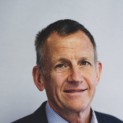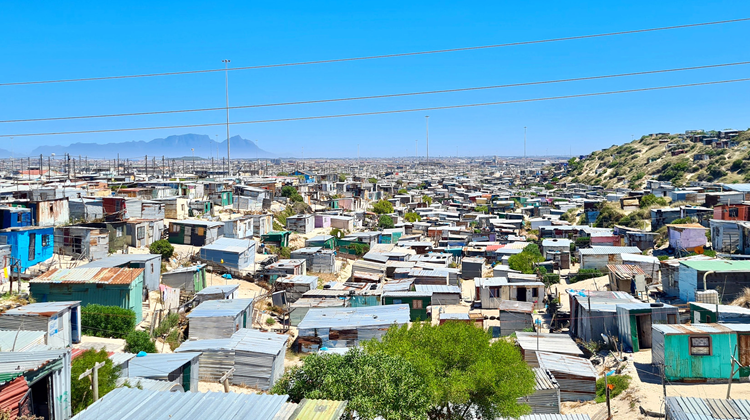Morocco: potential vs politics

A recent update on Morocco’s development potential provides a positive outlook for the country’s development prospects.
Generally, North Africa and the Sahel have been in the news for all the wrong reasons. Coups have rocked several former Francophone Sahel countries, such as Mali, Niger, Chad and Burkina Faso. Libya is torn asunder by two warring factions, and the spectre of African migrants seeking to move to greener pastures in Europe has become the defining feature of domestic politics in the European Union (EU).
As if that isn’t enough, several natural disasters have caused widespread destruction this year, including the devastating earthquake in Morocco and the unprecedented flood in Libya.
Within this challenging context, a recent update on the development potential of the Kingdom of Morocco provides a positive outlook for the country’s development prospects.
Morocco is unique in several respects.
Geographically, it is the only African country with Atlantic and Mediterranean coastlines and the only one with a land border with a member of the EU, Spain, in its borders with the tiny enclaves of Ceuta and Melilla. It claims the disputed Western Sahara territory, a sparsely populated area of mostly desert and a former Spanish colony rich in phosphates and fisheries that it part-annexed in 1975.
Morocco’s efforts to benefit from excellent trade relations with the US and Europe have been disappointing
The status of the Sahrawi Arab Democratic Republic (SADR), proclaimed as such by the Polisario Front, remains a divisive issue within the African Union (AU). Morocco left the organisation in 1984 shortly after the SADR was admitted as a member, only rejoining in 2017.
Morocco is also one of only two semi-constitutional monarchies in Africa. Like Lesotho, the other, Morocco has an elected Parliament, which places it in a modestly more democratic league than Eswatini, Africa’s last absolute monarchy. There, King Mswati III retains absolute authority; although as head of the executive, King Mohammed VI, retains considerable power.
Unlike most other North African states, Morocco depends heavily on imported hydrocarbons to meet its energy needs. It’s been unable to develop its oil or gas resources despite vigorous exploration efforts. While the amount of electricity production from renewable sources increases year-on-year, the share of renewables in total final consumption decreases, given Morocco’s expanding energy demand.
In the wake of the Arab Spring that started in Tunisia in December 2010, Morocco witnessed street protests demanding, among others, the removal of the king’s executive powers but generally not calling for him to step down. Morocco was eventually less affected by the widespread popular revolt and dissatisfaction than other countries in the region, likely because it had experienced several years of solid economic growth.
Up to two-thirds of Moroccan jobs are in the ‘grey’ economy
King Mohammed VI, who ascended to the throne in 1999 upon the death of his father, King Hassan II, also adopted several reforms early in his reign that served to soften the harsh authoritarianism evident previously.
Adopted by referendum on 1 July 2011, the Moroccan Constitution was prepared through a consultative commission and reflected some of the demands for political reform. The Constitution specifically outlaws single-party rule. It requires that political parties not be founded on a religious, ethnic or regional basis. It provides for various rights granted to the political opposition, ‘free, honest and transparent’ elections, equality between men and women, and various personal and political rights, including the right to strike.
After years of steady growth, Morocco experienced a sharp economic deceleration in 2022 due to domestic and international shocks, including a drought and high commodity prices. The downturn happened despite preceding efforts to open its economy for greater private-sector participation and investments in education, health and ICT competitiveness that improved productivity.
Still, the country struggles with an inflexible labour market and a large component of its labour force engaged in the informal, and not the formal, sector. Up to two-thirds of Moroccan jobs are in the ‘grey’ economy, with up to 77% of employment informal if one includes the large subsistence agricultural sector. The dominance of state-owned enterprises that receive favourable treatment and are exempt from the competition laws continues to drag on economic growth.
Generally, North Africa and the Sahel have been in the news for all the wrong reasons
With a GDP per capita of US$8 368 (in 2017 values), Morocco is classified as a lower-middle-income economy. On the Current Path or business-as-usual forecast based on the International Futures forecasting platform, Morocco’s GDP per capita will increase to US$10 718 in 2043, but has the potential for an increase of up to 33% above that number, significantly outperforming its low-middle-income peer group in Africa.
One of the reasons for our optimistic forecast is that the country has a more mature population structure than most African countries and already benefits from a large working-age population relative to dependents. On the Current Path forecast, Morocco’s population will increase from 36.5 million in 2019 to 43.3 million in 2043. However, it has relatively high levels of inequality.
Among the eight sectoral interventions modelled, the full implementation of the African Continental Free Trade Area scenario will have the greatest positive impact on the GDP per capita. In contrast, the manufacturing scenario has the largest impact on reducing extreme poverty, followed by growth in agriculture. However, Morocco is one of only a handful of African countries that have already achieved the Sustainable Development Goal of eliminating extreme poverty.
Morocco’s efforts to benefit from excellent trade relations with the United States (US) and Europe have been disappointing. A comprehensive Free Trade Agreement with the US entered into force in 2006, and Morocco has a similar arrangement with the EU dating from 2000. Trade in industrial products is entirely liberalised, while Morocco also has substantial access to the EU’s agriculture market.
Morocco has launched an aggressive campaign to woo fellow African countries, which included joining the AU in 2017
Negotiations for a Deep and Comprehensive Free Trade Area started in 2013 but were put on hold the next year at Morocco’s request. An amendment of the EU-Morocco Association Agreement protocols, which extended the tariff preferences laid down in the Association Agreement to products originating in Western Sahara, entered into force on 19 July 2019.
In response to the lacklustre results from trade with the US and Europe, recent years have seen a determined effort to turn more towards trade and investment in Africa, which offers large opportunities. As a result, Morocco has launched an aggressive campaign to woo fellow African countries, which included joining the AU in 2017, hosting the organisation’s summit in 2018, and serving on its Peace and Security Council.
Still, Morocco’s trade with the rest of Africa is low, and regional trade integration in North Africa (within the moribund Arab Maghreb Union) is low.
The Western Sahara/SADR dispute is the single largest impediment to economic growth and the diversification of the economies of Morocco and North Africa generally. Progress towards resolution is, therefore, urgent.
Image: © Hemis / Alamy Stock Photo






